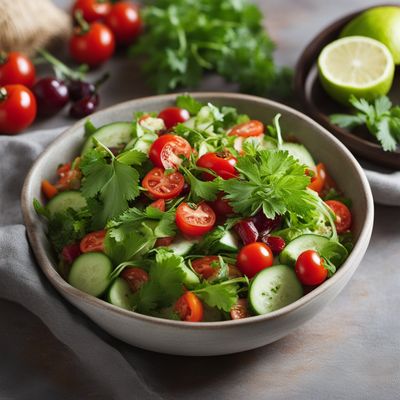
Ingredient
Palm hearts
The Delicate Delight: Palm Hearts
Palm hearts are the inner core of certain palm trees, harvested before they mature into full-grown trees. With a pale ivory color and a firm yet tender texture, palm hearts offer a mild, slightly tangy flavor reminiscent of artichokes. They have a smooth and succulent consistency, making them a versatile addition to salads, stir-fries, and even as a standalone appetizer.
Origins and history
Palm hearts have a rich history dating back to ancient times, where they were considered a delicacy by indigenous tribes in South and Central America. They were highly valued for their taste and nutritional benefits. Today, palm hearts are widely cultivated in tropical regions such as Brazil, Costa Rica, and Ecuador, where they are a staple in local cuisines.
Nutritional information
Palm hearts are low in calories and fat, making them a healthy addition to meals. They are also a good source of fiber, vitamin C, and potassium.
Allergens
There are no known allergens associated with palm hearts.
How to select
When selecting palm hearts, look for cans or jars that are well-sealed and free from any signs of damage or bulging. If purchasing fresh palm hearts, choose ones that are firm and have a pale ivory color. Avoid any that appear slimy or have a strong odor.
Storage recommendations
To maintain the freshness of palm hearts, store them in their original packaging or transfer them to an airtight container. Keep them refrigerated and consume within a few days of opening. If using canned palm hearts, store any leftovers in a covered container in the refrigerator.
How to produce
Palm trees take several years to mature and produce palm hearts. Growing palm trees from seeds is a long and complex process, making it more suitable for commercial cultivation rather than home production.
Preparation tips
Palm hearts can be enjoyed raw in salads, marinated in dressings, or lightly sautéed as a side dish. They can also be used in stir-fries, pasta dishes, and as a topping for pizzas. For a refreshing appetizer, palm hearts can be sliced and served with a tangy dipping sauce.
Substitutions
Artichoke hearts, bamboo shoots, or asparagus can be used as substitutes for palm hearts, offering a similar texture and flavor profile.
Culinary uses
Palm hearts are commonly used in salads, such as the classic Hearts of Palm Salad, as well as in tropical dishes like ceviche and coconut-based curries. They are also a popular ingredient in Mediterranean and Latin American cuisines.
Availability
Palm hearts are commonly available in tropical regions such as Brazil, Costa Rica, and Ecuador. They can also be found in specialty grocery stores or online retailers that offer international ingredients.
More ingredients from this category

Cabbage palm heart
The Delicate Delight: Cabbage Palm Heart

Coconut palm hearts
The Delicate Delight: Exploring the World of Coconut Palm Hearts

Devil rattan hearts
The Fiery Delicacy

Peach palm hearts
The Delicate Delights of Peach Palm Hearts

Assai palm hearts
The Delicate Delights of Assai Palm Hearts


